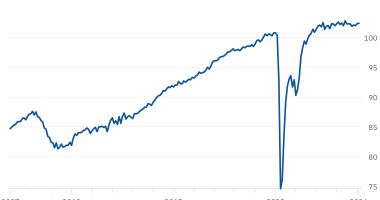Many foreigners in Germany may have found it difficult to register for a GP if they arrived in Germany in recent years.
Notices saying that GP offices aren’t taking on new patients are common, particularly in cities.
So it may not be surprising to hear that Health Minister Karl Lauterbach has been warning about the “difficult supply situation” when it comes to GPs.
The SPD health expert told broadcaster ARD at the weekend that there will be a shortage of tens of thousands of doctors in Germany in the coming years.
He said that one issue is how training is set up across Germany. “We lack 5,000 study places per year,” said Lauterbach. “As a result, we will have a total shortfall of 50,000 doctors over the next 10 years. Everyone will feel that.”
According to Lauterbach, German states are refusing to fund study places for doctors.
The minister wants to counteract this with a planned law aimed at providing greater security for local care.
But the problems are already visible. Figures from the National Association of Statutory Health Insurance Physicians (KVB) for 2023 show which federal states are struggling with a shortage of doctors.
Hamburg and Baden-Württemberg lag behind
The northern city of Hamburg brings up the rear with 1,329 GPs for 1.84 million residents. There are only 1.9 GPs per 1,000 people in the city state, the health insurance figures show.
The situation is similarly tense in Bremen. In 2023, 444 GPs were based there. For Bremen’s population of just under 570,000, that’s just 2.1 GPs per 1,000 inhabitants.

A doctor’s surgery in Hamburg. Photo: picture alliance/dpa | Christian Charisius
The situation isn’t much better in the southern state of Baden-Württemberg. Although a total of 7,036 GPs are based there, on average there are only 2.2 GPs per 1,000 residents.
The lack of GPs may help explain why, according to a recent study by Cambridge University, a patient in Germany is allocated an average of just 7.6 minutes during an appointment – significantly less than in other European countries.
There are also often long waiting times to see a GP even if you’ve made an appointment, showing the strain on GPs.
READ ALSO: Do doctors in Germany have too little time for their patients?
Advertisement
Mecklenburg-Western Pomerania and Schleswig-Holstein lead
There are some states where the supply situation is much better. The frontrunner is Mecklenburg-Western Pomerania with 3.4 GPs per 1,000 inhabitants, closely followed by Schleswig-Holstein, where there are 3.3 GPs per 1,000 patients.
Thuringia (2.8 doctors per 1,000 inhabitants), Lower Saxony (2.7) and Saxony (also 2.7) are around the middle, while the supply in Hesse (2.3), Bavaria (2.4) and North Rhine-Westphalia (also 2.4) is beginning to strain.
In Berlin there are 2,617 GPs for around 3.5 million residents. That means there are about 2.6 doctors per 1,000 people in the city.
As part of his proposals, Lauterbach wants to get rid of upper remuneration limits, which he says is important to attract new talent. If budgets are abolished, a larger proportion of young doctors will opt for the GP profession, he said.
READ ALSO: 7 things to know about visiting a doctor in Germany
The German government has also been relaxing visa procedures in order to attract people from non-EU countries to try and stem the general worker shortage.
“A new generation of medical personnel is urgently required in Germany,” says the government’s Make it in Germany site.
The government outlines that the demand will continue to grow as doctors retire.
“When it comes to local doctors, general practitioners as well as family doctors are in demand,” the government adds.
READ ALSO: The changes to Germany’s immigration rules in March 2024
Advertisement
How does Germany compare to the rest of the world?
Despite the predictions that Germany’s shortage will get worse, currently the availability of doctors is fairly high in an international comparison.
With 4.5 doctors per 1,000 inhabitants, Germany is ahead of countries such as France (3.4 doctors), the USA (2.7 doctors) and China (2.5 doctors), according to data from the Organisation for Economic Co-operation and Development (OECD) compiled by Statista.
The higher number of doctors in Germany per resident in this ranking could be down to different data being used or that, overall, people living outside of German cities are severed well by GPs.
Neighbouring Austria leads this ranking with 5.5 doctors per 1,000 residents, while India is at the bottom with a figure of 0.9.
Read More: World News | Entertainment News | Celeb News
Locals










